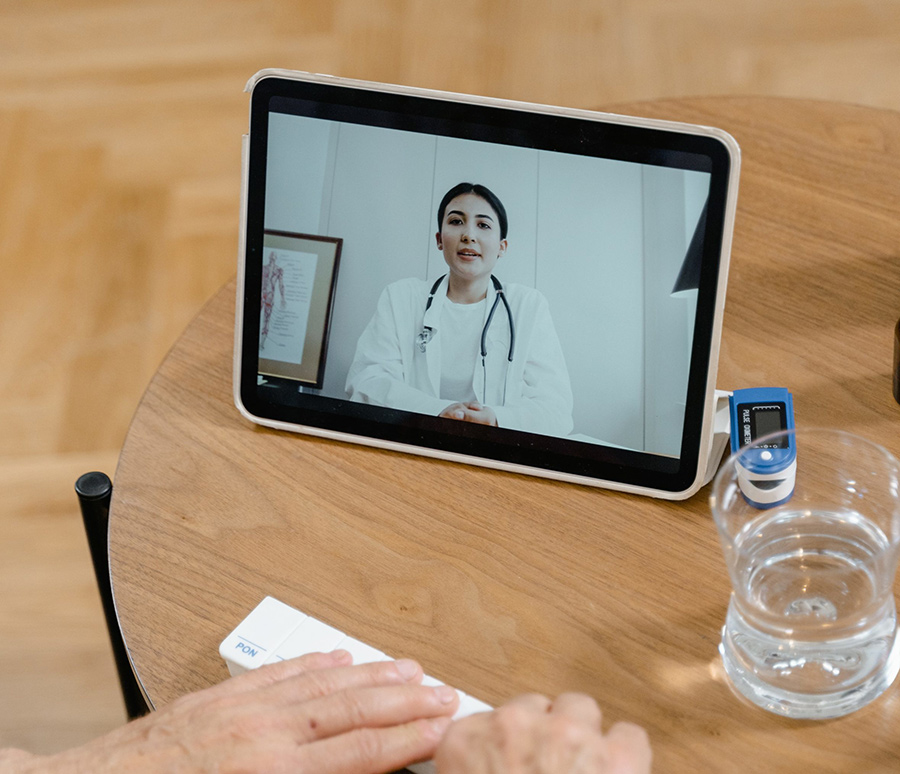It may be a long time before the health care industry replicates the consistent usage of telehealth that was seen during the spikes of April 2020, except for the realm of mental health, where it appears virtual care will play a critical role long after most specialties have primarily returned to in-office care.
The biggest reason why telehealth has showed sustained promise for behavioral health is it increases access for underserved patients, says Nicole Christian-Brathwaite, MD, an Adult, Child and Adolescent Psychiatrist, as well as Array Behavioral Care’s Senior Vice President and Medical Director of Scheduled Care and AtHome Care.
“There are thousands upon thousands of kids who do not have access to a child psychiatrist, whether it’s in a rural community or a very urban environment. Telepsychiatry opens the door to access a child psychiatrist or frankly, to any psychiatrist,” Christian-Brathwaite says.
According to McKinsey, not only do 7-in-10 counties lack a child psychiatrist, but 56 are without a psychiatrist and 64 percent have a shortage of mental health providers. For many families, Christian-Brathwaite adds, transportation, childcare and other social factors prevent them from seeing a mental health provider in person, even if one is in their community. It’s no wonder then that, according to McKinsey, 50 percent of psychiatry visits were being done virtually as of February 2021, compared to 13 to 17 percent for most other specialties.
For some telehealth companies, such as Doctors on Demand, visits for behavioral health sparked the overall increase in usage of the technology during the early days of the pandemic. Behavioral health remained the most prominent area of overall usage later on, according to a study in the Journal of Medical Internet Research. Another study, from RAND Corporation, had similar findings.
Why behavioral health holds such promise for telehealth
Along with increasing access to underserved patients, there are a number of additional reasons why experts say that behavioral health is an ideal area for telehealth. One rationale: Virtual care is a lot more anonymous for behavioral health patients than going into an office.
“Reaching out for and receiving mental health care unfortunately still carries a lot of stigma. The access being provided by digital platforms helps patients receive care where they sit both physically and mentally. All too often in behavioral health, we’ve made patients come to us or jump through hoops to receive care. These platforms provide much needed anonymity for people,” says Stuart Archer, CEO of Oceans Healthcare, a behavioral health provider with 30+ locations (including 23 hospitals) across the Southeast.
Moreover, the pandemic’s lingering impact on people’s mental health has bolstered use of tele-behavioral health. According to one survey, 68 percent of patients said the pandemic made their mental health worse, nearly 80 percent said they were introduced to telehealth during the pandemic for mental health and 84 percent want to keep using it. Lyra Health, a mental health company offering telehealth and in-person therapy that is worth more than $4 billion, has also seen increased awareness and prioritization from employers on mental health solutions, says Sean McBride, Lyra’s vice president of partnerships.
“Even before the pandemic, there was a change in conversation around mental health that’s happening across demographics but is really being driven and inspired by Millennials and Gen-Z who have very little problem talking about mental health needs at work. Companies now have company-wide campaigns to spark conversations on whether or not workers are okay,” says McBride. “Companies are still catching up to the demand that really was initially driven by younger employees and now is being echoed across the workforce.”
McBride says that virtual care provides more opportunities for psychiatrists and mental health clinicians to actually collaborate with patients outside the office, whether it’s video, asynchronous messaging, or even helpful tips. Guy Friedman, CEO of SteadyMD, says that behavioral health is a prime spot for telehealth for another obvious reason.
“There’s no physical touching required for the appointment to take place. That translates well to telehealth. There’s a lot of demand in the U.S. It’s becoming more accepted. The consumer and employer demand are off the charts for mental health because it translates well to telehealth,” says Friedman, whose company provides technology, infrastructure and clinical workforce to digital health companies so they can scale their virtual care platforms.
Challenges remain
If there is one thing that could—and would—hold back the tele-behavioral health, it’s payment parity laws. In December, Congress passed a provision within the stimulus bill that allowed Medicare to cover mental health services virtually on a full-time basis, however, under the condition that beneficiaries must see the provider in person within six months of virtual treatment. This provision may prevent underserved Medicare beneficiaries from ever getting tele-behavioral health care, experts say. There are bipartisan bills in both the House and Senate that would eliminate this provision, which has been lambasted by provider groups and mental health advocates alike.
“Payment, payment and payment are the three biggest barriers in increasing access to tele-behavioral health. Too often, payers play games that you wouldn’t get away with in any other industry. Providers have to jump through hoops and deal with a lot of frustrating bureaucracy [to get reimbursed],” says Archer.











